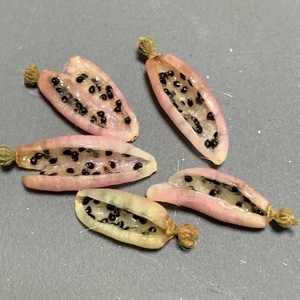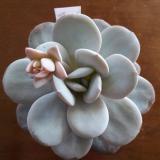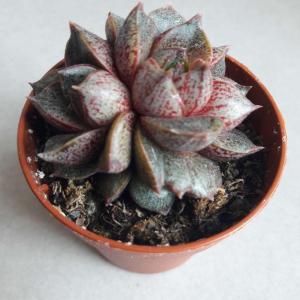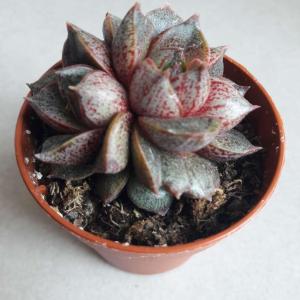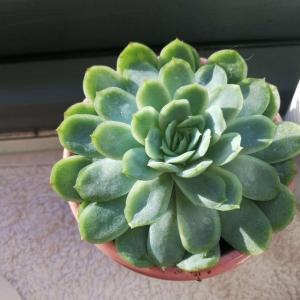Article
格桑花
2023-11-17

Introduction
Maintaining healthy eating habits is vital for our overall well-being. In today's fast-paced world, it's easy to fall into unhealthy eating patterns and consume food mindlessly. However, by nurturing healthy eating habits and practicing mindful eating, we can develop a more positive relationship with food, improve our nutritional intake, and enhance our overall health. In this guide, we will explore the importance of healthy eating habits, delve into the concept of mindful eating, and provide practical tips to incorporate these practices into your daily life.
Understanding Healthy Eating Habits
Healthy eating habits refer to the conscious choices we make regarding the foods we consume. These habits focus on consuming a balanced diet rich in essential nutrients while minimizing the intake of processed and unhealthy foods. Healthy eating habits involve:
1. Eating a variety of nutrient-dense foods: Include a wide range of fruits, vegetables, whole grains, lean proteins, and healthy fats in your diet to ensure you receive all the necessary vitamins, minerals, and antioxidants.
2. Portion control: Pay attention to portion sizes and avoid overeating. Use smaller plates, practice mindful serving sizes, and listen to your body's hunger and fullness cues.
3. Hydration: Drink an adequate amount of water throughout the day to stay hydrated. Limit the consumption of sugary beverages and opt for water, herbal teas, or infused water instead.
4. Meal planning: Plan your meals and snacks in advance to ensure you have nutritious options readily available. This can help prevent impulsive and unhealthy food choices.
5. Cooking at home: Prepare meals at home as much as possible, as this allows you to have control over the ingredients and cooking methods used. Home-cooked meals tend to be healthier than restaurant or processed foods.
The Concept of Mindful Eating
Mindful eating involves paying deliberate attention to the present moment and focusing on the sensory experience of eating. It encourages awareness of physical and emotional sensations, thoughts, and behaviors related to food. By practicing mindful eating, we can develop a healthier relationship with food, make conscious choices, and truly enjoy the eating experience. Here are some key principles of mindful eating:
1. Eating with intention: Be intentional and purposeful when choosing what to eat. Consider the nutritional value and how the food will nourish your body.
2. Slow down and savor: Eat slowly and savor each bite. Pay attention to the taste, texture, and aroma of the food. Chew thoroughly and appreciate the flavors.
3. Listen to your body: Tune in to your body's hunger and fullness cues. Eat when you are hungry and stop when you are comfortably satisfied. Avoid eating out of boredom, stress, or other emotional triggers.
4. Engage all your senses: Take the time to engage all your senses while eating. Notice the colors, smells, sounds, and textures of the food. This helps create a more enjoyable and mindful eating experience.
5. Non-judgmental awareness: Observe your thoughts and emotions without judgment. Be aware of any negative or guilt-inducing thoughts related to food and work towards cultivating a positive and non-judgmental mindset.
Practical Tips for Nurturing Healthy Eating Habits and Mindful Eating
Here are some practical tips to help you incorporate healthy eating habits and mindful eating practices into your daily life:
1. Plan and prepare meals ahead of time: Set aside time each week to plan your meals and snacks. Prepare and pack your meals in advance to avoid impulsive and unhealthy choices.
2. Create a calm eating environment: Find a quiet and peaceful space to eat. Minimize distractions such as television or electronic devices. Create a pleasant atmosphere that promotes mindful eating.
3. Use all your senses: Take a moment before eating to appreciate the visual appeal, aroma, and texture of your food. Chew slowly and savor the flavors.
4. Practice portion control: Use smaller plates and bowls to help control portion sizes. Pay attention to your body's hunger and fullness cues and stop eating when you feel satisfied.
5. Be mindful of emotional eating: Notice if you tend to eat in response to emotions such as stress or sadness. Find alternative ways to cope with emotions, such as engaging in physical activity, journaling, or talking to a supportive friend.
6. Eat mindfully without distractions: Avoid eating in front of the television, computer, or while working. Give your full attention to the eating experience and enjoy the food without distractions.
7. Be flexible and non-restrictive: Allow yourself to enjoy your favorite foods in moderation. Adopt a balanced approach that includes a variety of nutritious foods while still indulging in occasional treats.
8. Practice gratitude: Before starting your meal, take a moment to express gratitude for the nourishment and the effort put into preparing the food. This can help cultivate a positive mindset and appreciation for the eating experience.
Conclusion
By nurturing healthy eating habits and practicing mindful eating, we can improve our relationship with food, enhance our nutritional intake, and promote overall well-being. Incorporate these practices into your daily life by being intentional with your food choices, savoring each bite, listening to your body's cues, and creating a calm eating environment. Remember, developing healthy eating habits and practicing mindful eating is a journey that requires patience and self-compassion. Embrace these practices and enjoy the benefits of a more positive and mindful approach to eating.
0
0
Article
ATastyBellPepper
2023-11-16

Introduction
Maintaining a lush and lively lawn requires regular care and attention. Thankfully, there are several easy tricks and hacks that can help you achieve a healthy and vibrant lawn. In this guide, we will provide you with simple yet effective lawn care and maintenance hacks to keep your lawn looking its best.
Mowing Techniques
- Set your lawnmower blades to the appropriate height based on the grass type. Different grasses have different ideal heights for optimal health.
- Avoid cutting more than one-third of the grass blade's length at a time to prevent stress on the lawn.
- Alternate your mowing pattern each time you mow to prevent soil compaction and encourage upright growth.
Proper Watering
- Water deeply and infrequently rather than shallowly and frequently. This allows the roots to grow deeper and makes the lawn more drought-tolerant.
- Water early in the morning to minimize evaporation and give the grass blades time to dry before evening, reducing the risk of disease.
- Use a rain gauge or a small container to measure how much water your lawn receives, aiming for about 1 inch of water per week.
Dealing with Weeds
- Regularly inspect your lawn for weeds and address them promptly to prevent them from spreading.
- Pull out weeds by hand or use a weeding tool to remove them, ensuring you get the entire root system.
- Use an organic weed killer or herbicide if necessary, following the instructions carefully and selectively targeting the weeds.
Aeration
- Aerating your lawn helps alleviate soil compaction and allows air, water, and nutrients to reach the grass roots.
- Rent or purchase a core aerator and use it to remove small plugs of soil from the lawn.
- Aerate in the spring or fall, when the grass is actively growing, and the soil is moist but not overly wet.
Fertilization
- Apply a slow-release nitrogen-based fertilizer to your lawn in the spring and fall to promote healthy growth.
- Use a spreader to ensure even distribution of the fertilizer.
- Choose a fertilizer specific to your grass type and follow the recommended application rates.
Overseeding
- Overseeding helps fill in bare patches and improves the density of your lawn.
- Choose a high-quality grass seed blend that matches your existing grass type and climate.
- Prep the soil by removing debris and loosening the top layer before spreading the seeds. Keep the seeded area moist until the new grass establishes.
Controlling Lawn Pests
- Regularly inspect your lawn for signs of pests such as grubs or chinch bugs.
- Use organic pest control methods or insecticides specifically formulated for lawn pests.
- Follow the instructions carefully and apply treatments as needed to control and prevent infestations.
Edging and Trimming
- Edge your lawn along walkways, driveways, and garden beds to create a clean and crisp appearance.
- Use a manual edging tool or a power edger to create a defined edge.
- Trim along the edges of your lawn with a string trimmer to keep the grass neat and prevent it from encroaching on other areas.
Fall Cleanup
- Rake and remove fallen leaves from your lawn in the fall to prevent them from smothering the grass.
- Consider mulching the leaves with a mulching mower, which chops them into smaller pieces that can decompose and nourish the soil.
Regular Maintenance
- Regularly remove debris, such as sticks or toys, from your lawn to prevent damage to the grass.
- Keep your lawnmower blades sharp to ensure clean cuts and avoid tearing the grass blades.
- Address any bare or thin spots promptly by reseeding or patching to maintain a uniform and healthy lawn.
Conclusion
By implementing these simple lawn care and maintenance hacks, you can achieve a lush and lively lawn. Follow proper mowing techniques, water deeply and infrequently, address weeds promptly, and aerate the soil as needed. Fertilize and overseed to promote healthy growth, control pests, and maintain a well-defined edge. Regular fall cleanup and ongoing maintenance are also essential for the overall health and beauty of your lawn. With these easy tricks, you'll enjoy a vibrant and inviting lawn throughout the year.
0
0
Article
ATastyBellPepper
2023-10-30

Introduction
In today's fast-paced world, finding time to prepare healthy and delicious meals can be a challenge, especially on busy weekdays. However, with some quick and easy meal prep ideas, you can ensure that you have nutritious meals ready to go throughout the week. This article aims to provide practical tips and recipes that are perfect for busy individuals, including teenagers who are looking to eat well while juggling school, extracurricular activities, and other responsibilities.
Plan Your Meals in Advance
Planning your meals in advance is crucial for successful meal prep. Take some time at the beginning of each week to decide what meals you want to prepare. Consider your schedule and choose meals that are quick to make and can be easily reheated. Make a shopping list based on the ingredients needed for your chosen recipes. Having a clear plan will save you time and ensure that you have all the necessary ingredients on hand.
Prep Ingredients in Bulk
One of the key time-saving strategies for meal prep is prepping ingredients in bulk. Chop vegetables, cook grains, and prepare proteins in large batches. This way, when it's time to assemble your meals, you can simply grab the prepped ingredients and quickly put your dishes together. Store prepped ingredients in airtight containers in the refrigerator to maintain freshness.
Mason Jar Salads
Mason jar salads are a convenient and visually appealing way to enjoy fresh and crisp salads throughout the week. Layer your favorite salad ingredients in a mason jar, starting with the dressing at the bottom, followed by ingredients that won't get soggy, and ending with delicate greens at the top. When you're ready to eat, simply shake the jar to distribute the dressing and enjoy a delicious salad on the go.
One-Pot Meals
One-pot meals are a lifesaver for busy weekdays. They require minimal effort and result in delicious and satisfying meals. Choose recipes that combine protein, vegetables, and grains or pasta in a single pot. This not only cuts down on preparation and cleanup time but also allows flavors to meld together for a more flavorful dish. Some popular one-pot meal ideas include stir-fries, pasta bakes, and chili.
Freezer-Friendly Meals
Freezer-friendly meals are a game-changer when it comes to meal prep. Prepare large batches of soups, stews, casseroles, and sauces that can be easily stored in the freezer. Portion them into individual servings or family-sized portions, and label them with the name and date. When you're short on time, simply thaw and reheat these meals for a quick and satisfying dinner.
Overnight Oats
Overnight oats are a fantastic option for a quick and nutritious breakfast. Simply combine rolled oats, milk or yogurt, and your choice of sweeteners or flavorings in a jar or container. Leave it in the refrigerator overnight, and in the morning, you'll have a ready-to-eat breakfast that can be enjoyed as is or topped with fresh fruits, nuts, or seeds. Experiment with different flavor combinations to keep your breakfasts exciting.
Sheet Pan Dinners
Sheet pan dinners are a fantastic way to minimize prep and cleanup time. Choose a protein, such as chicken, fish, or tofu, and accompany it with a variety of vegetables on a sheet pan. Season everything with your favorite spices and roast it in the oven. Sheet pan dinners not only save time but also result in delicious and well-balanced meals. Plus, the leftovers can be easily packed for lunch the next day.
Mason Jar Smoothies
Smoothies are a quick and nutritious option for a snack or meal on the go. Prepare individual servings of smoothie ingredients in mason jars by combining fruits, vegetables, yogurt, and any other desired add-ins. Refrigerate the jars until you're ready to enjoy a smoothie. When it's time to blend, simply pour the contents of the jar into a blender, add liquid, and blend until smooth. This method saves you time on measuring and cutting ingredients every time you wantto make a smoothie.
Conclusion
Quick and easy meal prep ideas are a game-changer for busy weekdays. By planning your meals in advance, prepping ingredients in bulk, and utilizing time-saving techniques like one-pot meals and freezer-friendly options, you can ensure that you have nutritious meals ready to go throughout the week. Whether you're a teenager with a packed schedule or a working professional with limited time, these meal prep ideas will help you eat well without sacrificing taste or quality.
0
0
Article
lrgarden
2023-02-19

In today's fast-paced world, it's easy to fall into sedentary habits and prioritize work and responsibilities over physical activity. However, exercise and physical activity are essential components of a healthy and fulfilling life, offering numerous physical and mental benefits. In this article, we will explore the benefits of regular exercise and physical activity and why it's important to make it a part of your daily routine.
Improves Physical Health
One of the most obvious benefits of exercise and physical activity is the improvement of physical health. Regular physical activity can help lower the risk of numerous chronic diseases, including heart disease, stroke, and diabetes, as well as improve cardiovascular health and lung function. Additionally, physical activity can improve bone health and reduce the risk of osteoporosis.Enhances Mental Health
In addition to physical benefits, regular exercise and physical activity can have a significant impact on mental health. Exercise has been shown to reduce symptoms of depression, anxiety, and stress and improve overall mood. Physical activity can also improve cognitive function and reduce the risk of cognitive decline and dementia.Increases Energy and Stamina
If you're feeling sluggish and lacking energy, incorporating physical activity into your daily routine can help boost energy levels and improve stamina. Regular exercise can also improve your ability to perform daily tasks and increase overall physical function.Improves Sleep Quality
Exercise and physical activity can also improve sleep quality and help you get a better night's rest. Regular physical activity can help regulate sleep patterns and improve the quality of sleep, leading to more restful and rejuvenating sleep.Increases Confidence and Self-Esteem
In addition to physical and mental health benefits, exercise and physical activity can also boost confidence and self-esteem. Regular physical activity can help improve body image and increase feelings of accomplishment and satisfaction, leading to improved confidence and self-esteem.Provides Opportunities for Social Interaction
Exercise and physical activity can also provide opportunities for social interaction and connection with others. Participating in group fitness classes, playing sports, or joining a recreational league can help you build relationships, connect with others, and create a sense of community.Conclusion
The benefits of regular exercise and physical activity are numerous and far-reaching, encompassing physical, mental, and emotional well-being. Incorporating physical activity into your daily routine can improve physical health, enhance mental health, increase energy and stamina, improve sleep quality, boost confidence and self-esteem, and provide opportunities for social interaction and connection. So why wait? Start moving today and experience the power of physical activity for yourself!0
0
Article
lrgarden
2023-01-31

Traveling may be a thrilling and eye-opening experience. It's easy to be swept up in the excitement of adventure. However, don't forget about travel security and safety precautions when overseas.
Follow these seven travel safety precautions to ensure that your vacation is memorable for all the right reasons.
1. Conduct your research
Before you arrive, familiarize yourself well with your location. Read visitor reviews and speak with locals to learn about the safest areas, places to stay, and crime rates. For national updates, visit the State Department's website and enroll in the Smart Traveler Enrollment Program (STEP).Knowing who to contact in an emergency is another vital travel security measure. Find out how to contact the closest embassy or consulate, police station, and other local emergency services.
2. Don't bring attention to yourself
People who seem to be from out of town are particularly susceptible to crime, so try to blend in as much as possible. Choose attire that is unobtrusive and will not draw attention to yourself. When looking at maps, be inconspicuous, and approach people with caution if you need instructions.Consider purchasing protective clothes and equipment to make it more difficult for pickpockets to take the money and other personal belongings.
3. Make duplicates of vital papers
You never know when you'll need a duplicate of your passport, driver's license, or another piece of identity. Scan these papers to store them online and print multiple copies. You won't have to scramble for the correct papers if you need to return home.4. Maintain contact with your friends and family
Whether you're going on an overnight trip or a month-long overseas trip, it's always a good idea to notify friends and relatives back home. Send a printout of your itinerary to a few trustworthy persons who can keep track of your whereabouts before you go. Check-in with your contacts on a frequent basis to ensure they know you're where you're meant to be.5. Be cautious with public Wi-Fi
Don't allow the ease of access to the Internet to cloud your judgment. When you use public Wi-Fi, hackers aiming to steal sensitive information, such as credit cards or Social Security numbers, may get access to your data. If you need a wireless Internet connection, set up a virtual private network (VPN) to enable you to access the Internet safely while traveling.6. Protect your hotel room
Even if your hotel has strict security measures in place, you may take steps to make your room safer. Lock and deadbolt the door, and keep the windows closed. You may add another degree of security by purchasing a jammer, which is a small gadget that slides under the door.Place a Do Not Disturb sign on the outside of your door and keep the blinds or windows closed to create the idea that you're in your room even when you're not.
Allow no strangers inside your room, even if they claim to work for the hotel. You may always phone the front desk to see whether someone has been summoned to your room by hotel employees.
7. Keep an eye on your surroundings
Don't let your guard down in order to capture the ideal image for your social media platforms. Always keep a watch on your personal items and take caution while speaking with strangers. The possibility to meet new people and learn about their cultures are a significant part of what makes traveling so enjoyable. However, if someone close to you is behaving suspiciously, or if you feel uneasy, leave the location immediately.Following these guidelines may help you travel securely, but no matter how many measures you take, the unexpected can always occur. Stay secured with Nationwide travel insurance and enjoy peace of mind no matter where you go.
0
0
Article
atastybellpepper
2022-07-08

Are you interested in planting a garden but unsure of where to start? You should read this article about gardening for beginners since it contains 8 easy steps to get you started.
This may sound familiar to you. I saw weeds, overgrown vegetation, and a few dried-out pots in my yard where I had attempted to grow tomatoes the previous year. How am I going to grow anything here, I ask myself. What should I start with? How am I going to know what to plant? "Will a garden be worth the time and money I invest in it?"
Take a look at these instructions before trying them out. You are capable of doing this.
The ideal location is one that is handy for you—somewhere you will often see and pass by. Although the garden in the rear of the yard, behind the shed, may get the most sunlight, if you don't consistently visit it, you could forget about it.
Looking for a location with at least 6 to 8 hours of daylight is ideal for this site, which ideally receives morning sun (more is ok). In warmer places like Arizona, you may need to give shade throughout the summer.
Use the Sun Seeker app to check your sun exposure (or similar). gives you the ability to check how much sunshine each region gets.
Additionally, there should be a water supply nearby or accessible via hose.
You can always add more when you start small. A raised bed that is "4 feet by 4 feet" is a nice place to start. Attempt to reach a depth of 12 to 18 inches. It is simple to build and has enough room to produce a lot of food. You must be able to reach into the bed's middle without walking on the ground. Later, as your knowledge and expertise increase, add additional raised beds. Tips for creating raised bed gardens are provided in this article.
Alternately, for container growing, use many large pots or half wine barrels.
It is ideal to water seedlings using an automated irrigation system and a hose. Simple methods for automatic watering include connecting a battery-operated timer to your hose bib and using a soaker hose or drip irrigation system to water your garden. For hand-watering fresh seedlings and seeds, a two-way splitter for a second hose is useful.
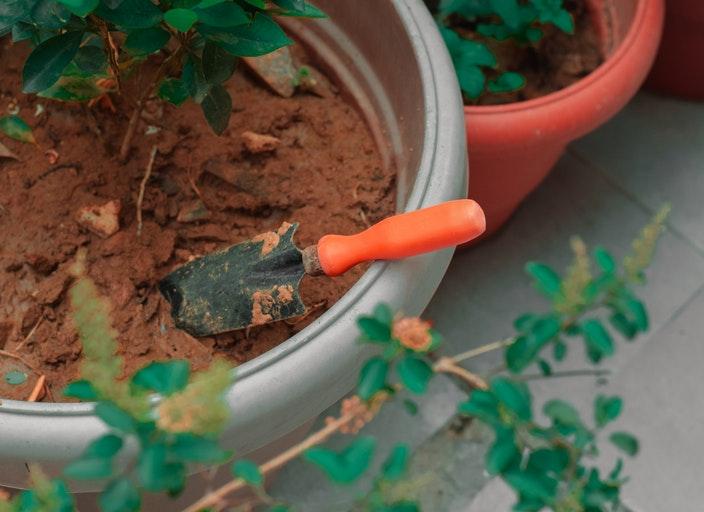
Raised beds have the benefit of not using existing soil. You are prepared to plant after you have added the ideal combination of elements to your raised bed. The most costly component of starting a garden will probably be this one-time expenditure.
Mix the following ingredients in an equal ratio to fill the bed:
Use a variety of brands of compost or create your own.
Peat moss or coconut coir - assists with water retention and lightens the soil.
Vermiculite - aids in water retention and promotes soil airflow.
What much of dirt do you need? The size of your raised bed or containers will decide this. 16 cubic feet of dirt will be required to fill a 44 bed that is 1 foot deep. When you plant, amend your soil with new compost. More details about the ideal soil for raised bed gardens are provided in this article.
Organic fertilizer should be added to the beds once the soil is added. I make fresh raised beds with organic fertilizer using this formula.
In the future, it will be crucial to test your soil annually. Your soil's health may be ascertained by a soil test. I use a kit like this to test the soil. It is quite easy to use.

Gardening requires the use of timing. Making decisions on what to plant and when to plant it is simplified by using a planting guide. You should start your search for a planting guide at local extension offices and locally owned nurseries.
Root vegetables (carrots, turnips, radishes, etc.), peas, beans, maize, squash, melons, cucumbers, and Swiss chard are best grown from seed.
Brussels sprouts, tomatoes, and peppers are the best as seedlings.
Broccoli, cabbage, cauliflower, lettuce, kale, and spinach are all good choices.
Check fresh seeds and seedlings often, and water as needed to maintain a wet soil environment. Newly planted seeds and seedlings will perish if they get too dry.
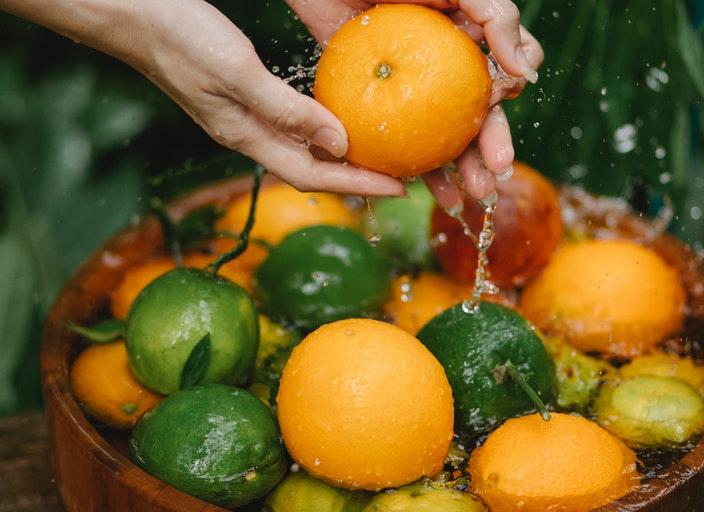
Every morning, stroll around your garden, ideally when the irrigation system is on. Take note of what is flourishing (hurray!) and keep an eye out for issues while they are still little and manageable. Difficulties (such as pests, diseases, and irrigation problems) are simple to handle while they are little. Enjoy your accomplishments and take lessons from your mistakes.
Pick early and often to promote more output. Utilize the produce from your garden. Try out new recipes and add the produce from your garden to the meals your family currently enjoys. Using garden veggies in soups and smoothies is a terrific idea.
This may sound familiar to you. I saw weeds, overgrown vegetation, and a few dried-out pots in my yard where I had attempted to grow tomatoes the previous year. How am I going to grow anything here, I ask myself. What should I start with? How am I going to know what to plant? "Will a garden be worth the time and money I invest in it?"
Take a look at these instructions before trying them out. You are capable of doing this.
Step 1: Determine where to start your garden.
The ideal location is one that is handy for you—somewhere you will often see and pass by. Although the garden in the rear of the yard, behind the shed, may get the most sunlight, if you don't consistently visit it, you could forget about it.
Looking for a location with at least 6 to 8 hours of daylight is ideal for this site, which ideally receives morning sun (more is ok). In warmer places like Arizona, you may need to give shade throughout the summer.
Use the Sun Seeker app to check your sun exposure (or similar). gives you the ability to check how much sunshine each region gets.
Additionally, there should be a water supply nearby or accessible via hose.
Step 2: Add a raised bed
You can always add more when you start small. A raised bed that is "4 feet by 4 feet" is a nice place to start. Attempt to reach a depth of 12 to 18 inches. It is simple to build and has enough room to produce a lot of food. You must be able to reach into the bed's middle without walking on the ground. Later, as your knowledge and expertise increase, add additional raised beds. Tips for creating raised bed gardens are provided in this article.
Alternately, for container growing, use many large pots or half wine barrels.
Step 3: Install an irrigation system
It is ideal to water seedlings using an automated irrigation system and a hose. Simple methods for automatic watering include connecting a battery-operated timer to your hose bib and using a soaker hose or drip irrigation system to water your garden. For hand-watering fresh seedlings and seeds, a two-way splitter for a second hose is useful.

Step 4: Fill your raised bed with dirt.
Raised beds have the benefit of not using existing soil. You are prepared to plant after you have added the ideal combination of elements to your raised bed. The most costly component of starting a garden will probably be this one-time expenditure.
Mix the following ingredients in an equal ratio to fill the bed:
Use a variety of brands of compost or create your own.
Peat moss or coconut coir - assists with water retention and lightens the soil.
Vermiculite - aids in water retention and promotes soil airflow.
What much of dirt do you need? The size of your raised bed or containers will decide this. 16 cubic feet of dirt will be required to fill a 44 bed that is 1 foot deep. When you plant, amend your soil with new compost. More details about the ideal soil for raised bed gardens are provided in this article.
Organic fertilizer should be added to the beds once the soil is added. I make fresh raised beds with organic fertilizer using this formula.
In the future, it will be crucial to test your soil annually. Your soil's health may be ascertained by a soil test. I use a kit like this to test the soil. It is quite easy to use.

Step 5: Locate a planting manual created for your region and adhere to it.
Gardening requires the use of timing. Making decisions on what to plant and when to plant it is simplified by using a planting guide. You should start your search for a planting guide at local extension offices and locally owned nurseries.
Step 6: Plant foods you like eating.
Root vegetables (carrots, turnips, radishes, etc.), peas, beans, maize, squash, melons, cucumbers, and Swiss chard are best grown from seed.
Brussels sprouts, tomatoes, and peppers are the best as seedlings.
Broccoli, cabbage, cauliflower, lettuce, kale, and spinach are all good choices.
Check fresh seeds and seedlings often, and water as needed to maintain a wet soil environment. Newly planted seeds and seedlings will perish if they get too dry.

Step 7: Spend some time each day in your garden.
Every morning, stroll around your garden, ideally when the irrigation system is on. Take note of what is flourishing (hurray!) and keep an eye out for issues while they are still little and manageable. Difficulties (such as pests, diseases, and irrigation problems) are simple to handle while they are little. Enjoy your accomplishments and take lessons from your mistakes.
Step 8: Gather and consume your harvest
Pick early and often to promote more output. Utilize the produce from your garden. Try out new recipes and add the produce from your garden to the meals your family currently enjoys. Using garden veggies in soups and smoothies is a terrific idea.
2
1
atastybellpepper: awesome
sososo: This article is really useful for me!
sososo: This article is so well written!
Growing
kensong
2019-05-01

The hybrid Ficus Lyrata Variegata is not an easy find and also not an easy plant to care for compared to the regular FLF but it's such a beauty.
It's leaves look painted with a cream white that frames a forest green leaf with unpredictable patches of olive green intertwined.
#ficus #ficuslyrata #ficuslyratavariegata #ficuslyratavariegated #lyrata #rubberplant #rubberplants #variegated #variegatedplants #houseplants #gardening #gardening_love #betterhomesandgardens #urbanplants
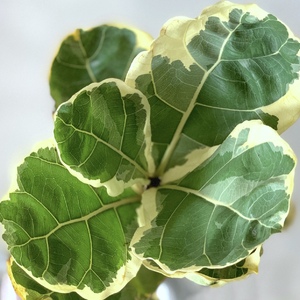
It's leaves look painted with a cream white that frames a forest green leaf with unpredictable patches of olive green intertwined.
#ficus #ficuslyrata #ficuslyratavariegata #ficuslyratavariegated #lyrata #rubberplant #rubberplants #variegated #variegatedplants #houseplants #gardening #gardening_love #betterhomesandgardens #urbanplants

1
0
Help
tiffxnyvo
2018-07-28

can anyone help me identify this mystery succulent? it’s super easy to accidentally remove the leaves, hence why i have so many in my propagation tray.
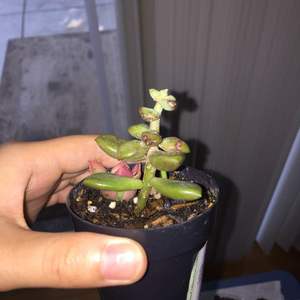
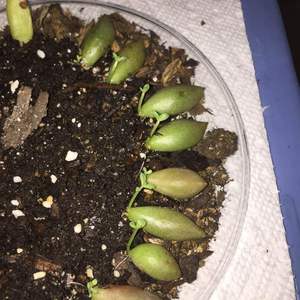


1
0
suculea: It streches because of lack of sunlight. it needs the biggest amount of direct sunlight that you can give it.
老毛: it may be a Sedum adolphii
and if you want to get your baby plant from the leaves,you should turn your leaves up side down
Finncarter
2018-05-13

Notocactus Haselbergii:
- This suoer spikey cactus coverd, has bright red blooms during mid to late spring. A single cactus of its sort can produce up to 6-7 flowers a year, this plant is also very easy to cross-pollenate.
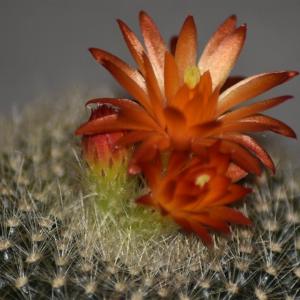
- This suoer spikey cactus coverd, has bright red blooms during mid to late spring. A single cactus of its sort can produce up to 6-7 flowers a year, this plant is also very easy to cross-pollenate.

1
0
Growing
Shami
2018-04-23

It said on the package that it was easy to grow. But I'm having a hard time on watering them. :( Date: April 23, 2018
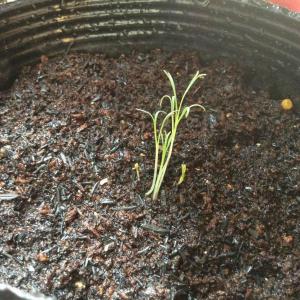

0
0


